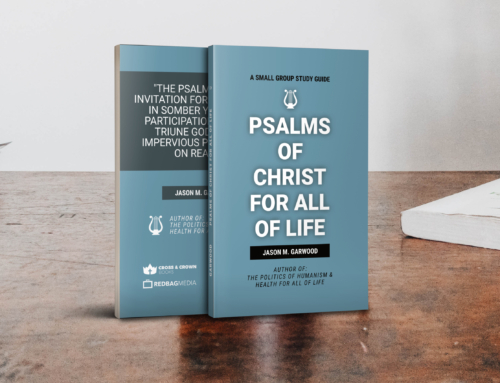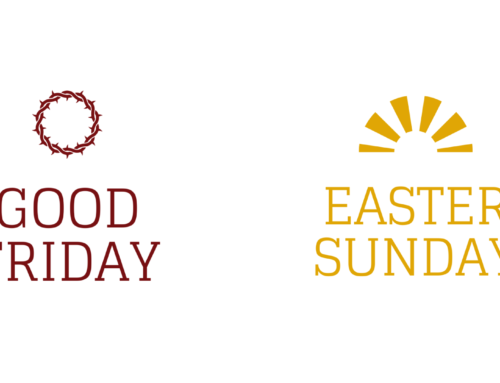And when they had approached Jerusalem and came to Bethphage, at the Mount of Olives, then Jesus sent two disciples, saying to them, “Go into the village opposite you, and immediately you will find a donkey tied there and a colt with her; untie them and bring them to Me. And if anyone says anything to you, you shall say, ‘The Lord has need of them,’ and immediately he will send them.” And this took place in order that what was spoken through the prophet would be fulfilled, saying, “Say to the daughter of Zion, ‘BEHOLD YOUR KING IS COMING TO YOU, LOWLY, AND MOUNTED ON A DONKEY, AND ON A COLT, THE FOAL OF A PACK ANIMAL.’” And the disciples went and did just as Jesus had instructed them, and brought the donkey and the colt, and laid their garments on them; and He sat on the garments. And most of the crowd spread their garments in the road, and others were cutting branches from the trees and spreading them in the road.And the crowds going ahead of Him, and those who followed, were crying out, saying, “HOSANNA TO THE SON OF DAVID; BLESSED IS HE WHO COMES IN THE NAME OF THE LORD; HOSANNA IN THE HIGHEST!” And when He had entered Jerusalem, all the city was stirred, saying, “Who is this?” And the crowds were saying, “This is the prophet Jesus, from Nazareth in Galilee.”
MATTHEW 21:1-11 (LSB)
INTRODUCTION
Today is Palm Sunday. Billions of Christians worldwide commemorate this day as being significant and consequential. Why? Because on this day, Holy Week had begun. Jesus often told His disciples that His aim was Jerusalem. In fact, Luke 9:51 tells us that “He set His face to go to Jerusalem,” and this was back in chapter 9! Perhaps our next question should be this: Why was Jesus so determined to get to Jerusalem? When we put the Synoptic Gospels of Matthew, Mark, and Luke together, and then compare them with the Gospel of John, we find that Jesus goes to Jerusalem several times. But why is there such a strong emphasis on this particular arrival in the Synoptics? Was it because it was the last time Jesus would go there? Perhaps. The answer is actually very simple, and it is basic to our theology: that’s where kings go.
Jerusalem was central for everything in Jewish life. The grandeur of the Temple, while actively being restored during Jesus’ ministry, was the place where heaven and earth met. It was the place where God had chosen to dwell with His people. However, there was one problem: A few centuries ago, Ezekiel saw the glory of Yahweh depart the Temple (Ezek. 10), and by the First Century A.D., Yahweh had still not yet returned to Zion. It was a massive edifice of rock—a remarkable temple made with human hands—and yet, despite God’s presence not being there, the First Century Jews believed with fervor that He would, in fact, return any day now. Jerusalem is the place from which the King of the Jews must rule and reign. Temple was there. David had been there. Judas Maccabeus had won a decisive battle there a century before. Jerusalem was the center of all religious, political, social, and economic life. Surely the king would come? Even though the Romans were ruling over them, the Jews believe it was God’s city, God’s house.
So why must Jesus go to Jerusalem? To be King. Most Bibles with headers at the top of certain sections describe this passage as being “The Triumphal Entry.” In the past, I’ve called it “The Royal Entry.” Perhaps the word “triumph” shows our cards far too early. What is this entry of Jesus on a donkey into the great city really about? I submit that we’re talking about “The Humble Entry” of King Jesus. A completely unassuming, unobtrusive, and meek entry. While there is some pomp and circumstance from the people who don’t quite know exactly what is going on, the entry of Jesus into the city with all the royal overtones of the Old Testament is really just one more step on the way to the cross—the true throne. Jesus does not “seize” the Kingdom—that’s what the Gentiles do (Matt. 20:25). Rather, Jesus enacts the Kingdom by giving His life as a ransom for many. The same city that embraced Him would be the same city that sent Him outside the camp to die a criminal’s death. In Jesus’ eyes, the Kingdom will not be taken, or seized or manipulated; it will be established by the death and resurrection of Christ. Whatever expectations you have of this King, check them at the door. The son of David is also David’s Lord and His throne is going to look a little different than popular expectations.
THE TEXT
The passage can be outlined as follows. Verse 1 sets the scene: Jesus and His disciples approach Bethphage at the Mount of Olives (significant for the prophet Zechariah) which was about a mile Northeast of Jerusalem. The steep valley of Kidron laid between Jerusalem and this ‘suburb.’ It was here in Bethphage where the two disciples are told to find the donkey and a colt, untie them, and bring them to Jesus (v. 2). Should the owners not understand what is going on, Jesus instructs the disciples to tell them, “The Lord has need of them” (v. 3). The fact that Jesus knew about the donkey and colt isn’t just a ‘flex’ of His divine nature; no, Jesus is a military strategist with a self-conscious understanding of what it is He intends to do. He is setting Himself up for a showdown in Jerusalem.
Immediately Matthew introduces us to a fulfillment of prophecy, quoting from Isaiah 62:11 & Zechariah 9:9, which reads, “Say to the Daughter of Zion, ‘Behold Your King Is Coming To You, Lowly and Mounted on a Donkey, And on a Colt, the foal of a pack animal’.” Matthew says that what we have transpiring here was predestined to be so. The Scriptures cannot be broken, and the Scriptures must be fulfilled.
The disciples in verse 6 obey their Master, in verse 7 they bring the donkey and the colt, laid their garments on them, and Jesus sat on the garments. [The mother came with the colt so as to guide and control the colt while Jesus sat upon it.] In verse 8, we find that as they approach Jerusalem, the crowd spread their garments in the road, and others cut down branches from the palm trees, spreading them on the road. The scene is set: the King is being welcomed into the King’s city.
In verse 9 the crowds go ahead of Him, and those who were behind Him cried out with a quote from Psalm 118:25, “Hosanna to the Son of David; Blessed is He Who comes in the Name of the LORD; Hosanna in the highest!” The word “Hosanna” means “Save us,” which was a common phrase used in Jewish worship and prayer. The religious enthusiasm of the crowd is marked by Scriptural chants. Their use of the phrase “Son of David,” is very much full of royal overtones. What we have here is a political rally.
Verse 10 gives us a pulse of the occasion: “And when He had entered Jerusalem, all the city was stirred, saying, ‘Who is this?’.” Did some of the crowd get caught up in the moment? Probably. Did others see the donkey and colt and realize that what they were witnessing is deeply embedded in their cultural memory? Absolutely. Did the others in the city not know who it was? You bet. The word “stirred” literally means “shaken,” and our word ‘seismic’ comes from it. Jerusalem had been troubled once before when the Magi came looking for the King of the Jews. They were upset then because Herod was upset. Now Jesus is coming to upset them one more time.
Verse 11 answers the question of verse ten. Who is this? “And the crowds were saying, ‘This is the prophet Jesus, from Nazareth in Galilee’.” Is He a King or a Prophet? We know the answer. The crowd knew of Deuteronomy 18:15-18 which foreshadowed a coming prophet like Moses, and here we have the clue—Jesus is this coming prophet. And what do prophets do? They preach, which is what Jesus does in the next section when He goes to the temple to disturb the idolatry. His first act in the city after being welcomed by the crowds is to start stirring things up and making people mad—not for the sake of making people mad, but for the sake of righteousness. Everyone loves a prophet that tells them niceties; no one likes a prophet who starts meddling. So, how can we apply a passage like this today?
APPLICATION
Since the first part of Jesus’ ministry, our Lord has tried to keep a lid on the messianic secret: He told His disciples (and the demons) to keep quiet about Him (Mark 1:25, 44); He didn’t want to be crowned king (John 6:15); after healing a man on the Sabbath, the Pharisees went after Him, so He withdrew from that location (Matt. 12:15); He went to Galilee after learning about the arrest of John the Baptist (Matt. 14:13); in fact, several times the Bible says that “he withdrew.” Why? Because the “hour” had not yet come. However, with the royal entry into Jerusalem, Jesus is ready for battle. Palm Sunday is actually Battle Sunday: It is the day when Jesus decided to make His confrontation direct, calculated, and abundantly clear.
The passage is laced with royal hints, insinuations, and themes. The prophecy from Zechariah is a prophecy about kingship. In what ways? Consider Genesis 49:8-12. Finding the donkey that is tied up is finding the promised one of Judah, the one who possess the scepter in order to rule. Donkey’s are beasts of burdens, and they are a sign of kingship. Horses are chariots were used for war; donkeys were used after the war as a sign of peace and tranquility. Donkey’s represent the Gentiles; which means that Jesus sitting on the colt is a clear message: Jesus is Lord of the world.
Why does Matthew speak of and emphasize the two donkeys?
- Recall the story of David. David fled Jerusalem when his son Absalom had tried to kill him. David left with two donkeys in 2 Samuel 16:1ff. What is Jesus the Son of David intimating in His arrival to Jerusalem on two donkeys? The Davidic Kingdom is about to be restored.
- In 2 Kings 9:13, King Jehu came into Jerusalem on a donkey with garments being laid in his path. Laying down garments is a sign of obeisance. Curiously, Jehu in 2 Kings 10 went on to destroy the temple of Baal that had been erected. Jesus, too, enters the city and makes war against a temple of false worship. What else in the Old Testament is present here?
- Exodus 4:19-20 reads, “And Yahweh said to Moses in Midian, “Go, return to Egypt, for all the men who were seeking your life are dead.” So Moses took his wife and his sons and mounted them on a donkey and returned to the land of Egypt. Moses also took the staff of God in his hand.” What we learn is that Jesus is a New Moses returning to Egypt as a prophet to declare the arrival of a New Exodus.
Jesus comes into Jerusalem having swept the land of Satan, sin, and death. He has done the task of the prophet and priest through preaching and healing, and now he is coming into His kingship. Before He can be enthroned on the cross, He must prophecy against the city, and He does so! Jesus’ entry into Jerusalem is Yahweh’s return to Zion, the parousia (appearance) of God in the flesh.
Regarding the nature of His coming, Jesus is a conqueror par excellence, the one prophesied in Zechariah 9, however, He’s a meek man whose kingdom doesn’t function like the kingdoms of the world. He does not tolerate idolatry, nor does He acquiesce to false peace. He is there in the city to disturb the sinful status quo. But note that He doesn’t use a sword with an army in tow, the very thing He would later explain to Pontius Pilate. Rather, Jesus uses the Sword of the Word of God to proclaim repentance and judgment on the stiff-necked people.
New kings always sort out the current administration, which means the Pharisee’s are in trouble, and they know it. He goes right after them with their compromised worship in the temple complex. Peter Leithart explains: “Jesus arranges a fulfillment of Scripture to confront Jerusalem with His claim to be the king, the son of David; the great Jehu; avenger of Yahweh; the greater Moses, the prophet of the exodus; the true son of Judah, the scion of the royal tribe.”
The humble entry into the city to sort things out, especially at the temple, is key to understanding the text. The temple incident which comes right after this is really a demonstration of the gospel: prophetic critiques levied against idolatry. Jesus’ ire in the temple is judgment against them, which would come in A.D. 70. In referencing Jeremiah there, Jesus condemns their retreat to the temple as a place of safety and a place of safeguarding their idolatry (N.T. Wright), when in fact, according to Jeremiah, they have committed tremendous injustice against their neighbors in a myriad of ways. There is no safe haven in a temple that is rife with idolatry! Shiloh 2.0 is upon them, and there will be no escaping the judgment that is coming, not without repentance.
The text emphasizes a battle of two temples: The temple of Jesus’ body will be torn down, and if you do not go to that temple to worship in Spirit and in truth, then you will continue to worship at the false temple in Jerusalem, and in 40 years, that will be torn down. The place where heaven and earth meet is not in a temple made with human hands, but a person-temple, the Lord Jesus Christ.
So, how do we live in light of this text?
One thing we learn is that true priestly ministry, true prophetic witness, and true godly dominion—the very thing Adam was supposed to do—is now fulfilled by the Second Adam, and given to His newly formed people. The coming of Christ as a man was a disruption process: the disruption and conquering of satan, sin, and death, and the re-capturing of God’s chosen people. Palm Sunday teaches us that our expectations are sometimes different from God’s conclusions, which means we must pay attention to Scripture.
People want a prophet until that prophet steps on their toes. People want a priest, until that priest is hung on a cross, bleeding out. People want a king, but they don’t want him to judge too harshly and mess with our idolatrous plans.
People want a prophet until that prophet steps on their toes. People want a priest, until that priest is hung on a cross, bleeding out. People want a king, but they don’t want him to judge too harshly and mess with our idolatrous plans.
Perhaps the greater lesson to learn is this: an invitation for Jesus to renovate the heart and fill it with His Spirit is asking to have your idols toppled, your mind rearranged, and your affections turned around. Are we ready for such things? Do we really want Christ to come to us and assess us as we really are? Or do we try to hide those things?
The big idea of the story rests on this truth: Jesus is the humble Messiah-King who demands purity in our worship and fruit in our walk. When the KING comes, everything changes—starting with ourselves.
The reason we ask God to create in us a clean heart is because we cannot create clean hearts for ourselves. Our best isn’t good enough. We need Him to clean us and make us new. But that cleaning can be relatively frustrating. It means parting with your sins, even the ones no one knows about. It means having a spotlight shown on your heart while the bugs scatter in fear. Listen: If you want your life to be reconciled to God, then it will have to be done on His terms. Jesus is the merciful and peaceable king of Israel who brings restoration to the people of God. But it’s on His terms, not ours.
Which means that we must have:
- Purity in our worship—clean hearts and clean hands; and
- Fruit in our walk—humble obedience to the King in every single area of life.
Will we follow behind Jesus making assumptions about Who He really is? Or will we submit to Him, follow Him into the city, and dare go with Him straight to the cross? That is the question we must ponder.






Leave A Comment